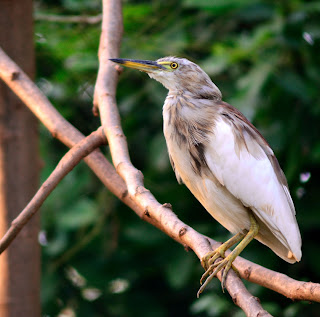This post is being created 8 months after the birding trip
to JP Park in Bangalore. This is a new park built to compensate for the
diminishing greenery in the Garden City. Well, it is not very conveniently accessible
to people all over Bangalore, but those staying around Yelahanka, Hebbal,
Mekhri Circle, Malleshwaram, KR Puram, Frazer Town, Vasanth Nagar and
surrounding areas may find it convenient. However, if you don’t mind travelling
20-40 kms to reach this place, you can visit it no matter where in Bangalore
you stay. I enjoyed my trip to this park.
The Journey
We started from home by 6:30 in the morning and reached the
park by 7:00. Took me some extra time ‘cause I didn’t know the way – first time
you see. It was surprising to see a whole bunch of people at he park so early in the morning. Totally unexpected. There
is a swimming pool (where they conduct classes) that was teeming with young
people who had come to attend these classes. Lucky for them, it was summer
vacation. Yes, we visited this place in April, 2012.
The Park
After parking the car we started our walk into the park. I
carried my camera, Nikon 5100, with Nikon 18-55mm and Tamron 70-00mm lenses
along with my trusty tripod. I was ready. One reason I chose to visit this park
was the fact that there is a huge water body right in the center of the park.
It’s beautiful. Take a look for yourself.
The roads in the park are well paved, plus there is a nice
children’s play park inside. There are cast-iron benches all around the walkway
where you can sit and enjoy the sights and sounds of the park.
The Birds
Well, now comes the interesting part – the birds. Weren’t
they the lure for me? Of course, they were; and, I was ready to shoot them!
The park is home to a lot of water birds and a few common
raptors as well. A subset of the sightings are listed below:
1.
Pond Herons
2.
Little Egrets
3.
Great Egret
4.
Black Kites
5.
Grey Heron
6.
Mynas
7.
Greater Coucals
8.
Ashy Prinia
9.
Great Cormorant
10.
Purple Moorhen
11. Crow
11. Crow
If you plan to go to this park, go early. There are many
morning walkers all over the park (and many of them are curious and may scare
your birds away).
View Larger Map



















































